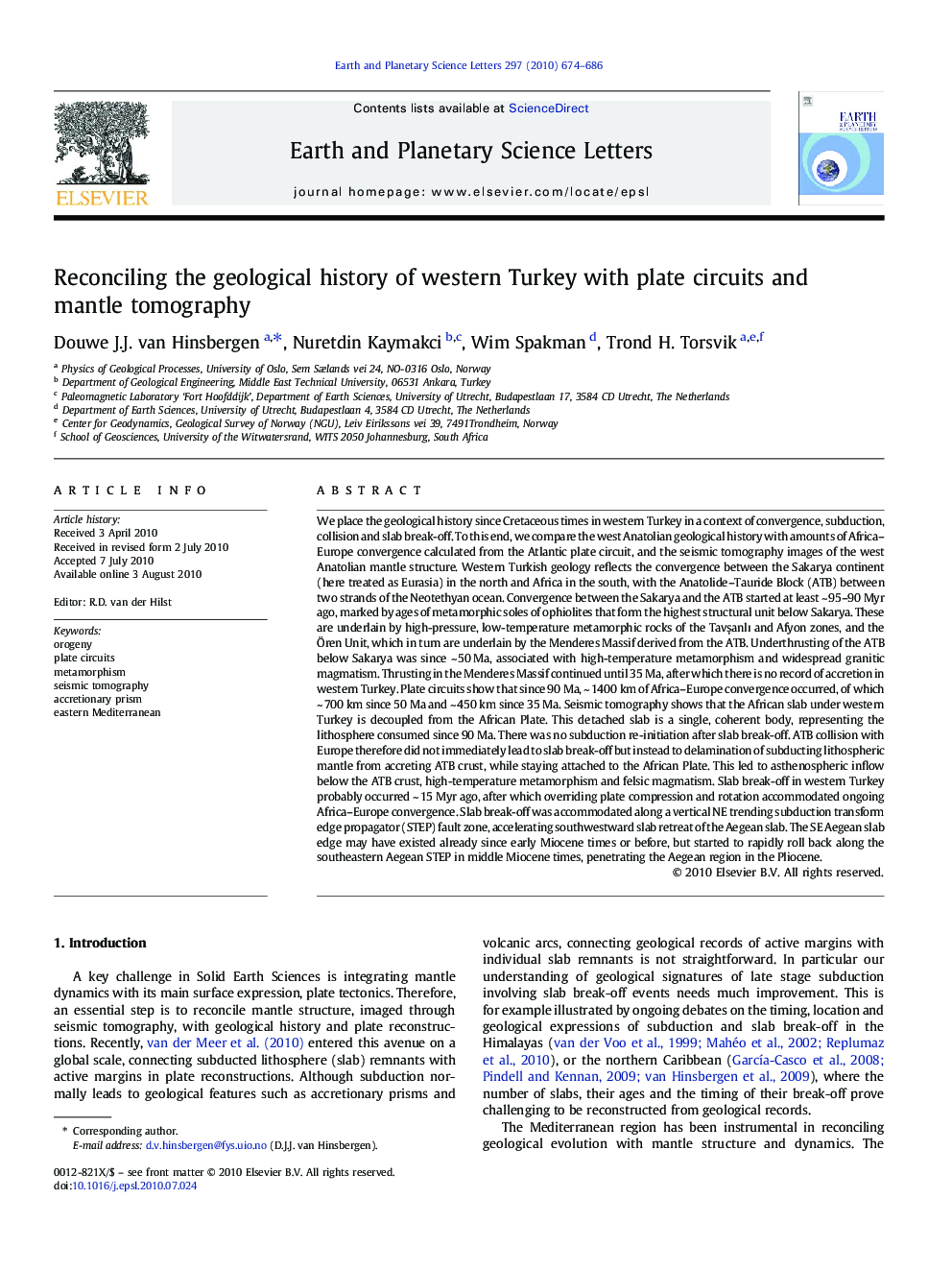| کد مقاله | کد نشریه | سال انتشار | مقاله انگلیسی | نسخه تمام متن |
|---|---|---|---|---|
| 4678396 | 1634845 | 2010 | 13 صفحه PDF | دانلود رایگان |

We place the geological history since Cretaceous times in western Turkey in a context of convergence, subduction, collision and slab break-off. To this end, we compare the west Anatolian geological history with amounts of Africa–Europe convergence calculated from the Atlantic plate circuit, and the seismic tomography images of the west Anatolian mantle structure. Western Turkish geology reflects the convergence between the Sakarya continent (here treated as Eurasia) in the north and Africa in the south, with the Anatolide–Tauride Block (ATB) between two strands of the Neotethyan ocean. Convergence between the Sakarya and the ATB started at least ~ 95–90 Myr ago, marked by ages of metamorphic soles of ophiolites that form the highest structural unit below Sakarya. These are underlain by high-pressure, low-temperature metamorphic rocks of the Tavşanlı and Afyon zones, and the Ören Unit, which in turn are underlain by the Menderes Massif derived from the ATB. Underthrusting of the ATB below Sakarya was since ~ 50 Ma, associated with high-temperature metamorphism and widespread granitic magmatism. Thrusting in the Menderes Massif continued until 35 Ma, after which there is no record of accretion in western Turkey. Plate circuits show that since 90 Ma, ~ 1400 km of Africa–Europe convergence occurred, of which ~ 700 km since 50 Ma and ~ 450 km since 35 Ma. Seismic tomography shows that the African slab under western Turkey is decoupled from the African Plate. This detached slab is a single, coherent body, representing the lithosphere consumed since 90 Ma. There was no subduction re-initiation after slab break-off. ATB collision with Europe therefore did not immediately lead to slab break-off but instead to delamination of subducting lithospheric mantle from accreting ATB crust, while staying attached to the African Plate. This led to asthenospheric inflow below the ATB crust, high-temperature metamorphism and felsic magmatism. Slab break-off in western Turkey probably occurred ~ 15 Myr ago, after which overriding plate compression and rotation accommodated ongoing Africa–Europe convergence. Slab break-off was accommodated along a vertical NE trending subduction transform edge propagator (STEP) fault zone, accelerating southwestward slab retreat of the Aegean slab. The SE Aegean slab edge may have existed already since early Miocene times or before, but started to rapidly roll back along the southeastern Aegean STEP in middle Miocene times, penetrating the Aegean region in the Pliocene.
Journal: Earth and Planetary Science Letters - Volume 297, Issues 3–4, 1 September 2010, Pages 674–686